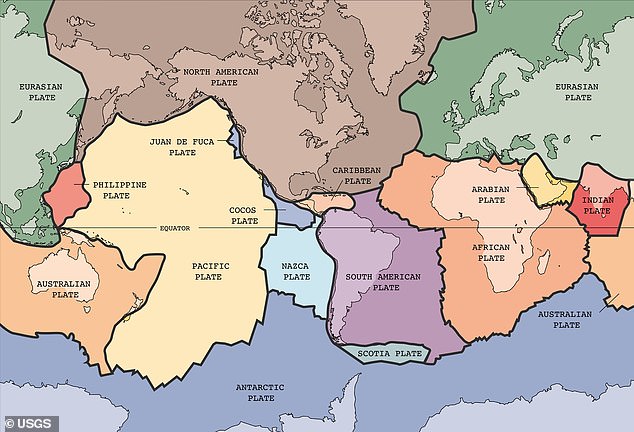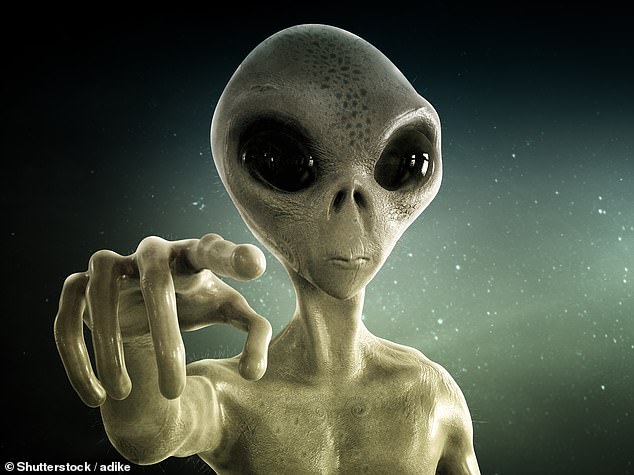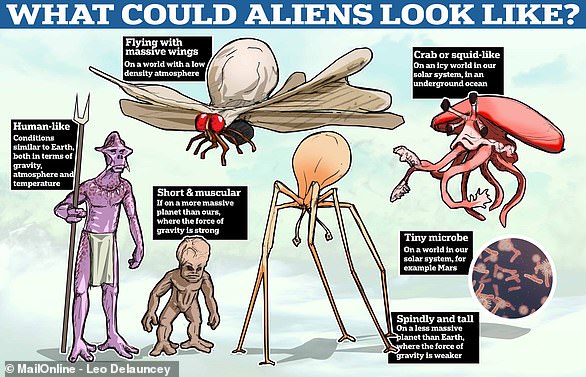Why an advanced alien civilisation really COULD wipe us out: Scientists identify two possible exoplanets where extraterrestrials may have had a five billion year head start on life on Earth
>
If aliens do exist, one major fear is that they could be far more advanced than us – and far less friendly.
Scientists have tended to throw cold water on this suggestion because they say extraterrestrial life is likely to be primitive and more closely related to bacterial microbes.
But what if there was a world that contained not only liquid water and oxygen, but also land masses that appeared five billion years before Earth’s continents?
With such a long head start, one astronomer believes it “would likely host life more advanced than us,” meaning such a civilization might have the potential to wipe us out if it wanted to.
Professor Jane Greaves at Cardiff University It has identified at least two such worlds that may exist in our Milky Way Galaxy, which hypothetically orbits stars 70 and 110 light-years away.
Will they come safely? Professor Jane Greaves of Cardiff University has identified two possible exoplanets where alien life may have begun on Earth five billion years ago. Pictured is HD 219134b, the closest rocky exoplanet outside our solar system
She told MailOnline: ‘These stars are much older than the Sun (about 8 billion years), which means any planets would have had time to become less luminous.’
“This puts their (hypothetical) planets at an age where the amount of rock needed to heat and the available radiative heat are in equilibrium similar to Earth’s when its continents emerged.”
If she’s right, and Professor Greaves believes it’s “worth a look as soon as possible” to see if these rocky worlds actually exist, there’s every possibility.Life on Earth could precede that on Earth.
She said the two stars, called HD 76932 and HD 201891, were born in our galaxy’s ancient and turbulent past, but they could have been born.The biosphere is more advanced than our planet.
Continents are formed thanks to plate tectonics, which involves the movement of rocky plates floating above the planet’s molten interior.
Over the course of Earth’s 4.5 billion year history, land masses have split apart, drifted apart, and then been pushed back together.
This is a result of the heat resulting from radiation processes inside the planet, which causes these plates to move.
This heat comes from radioactive elements such as uranium-238, thorium-232, and potassium-40 found in the Earth’s core, which release energy as they decay.
Professor Greaves said that if astronomers could find evidence of “stellar abundances of thorium and potassium” in distant star systems, it could help them focus on exoplanets with similar Earth masses to ours but much older.
“The outlook looks very promising for finding rocky exoplanets with continents,” she concluded.

The Earth contains fifteen tectonic plates (pictured) that together shape the landscape we see around us today
The closest rocky exoplanet yet found outside our solar system is HD 219134b, a giant terrestrial planet orbiting a K-type star 21 light-years from Earth. However, there is no indication that it contains continents.
howeverIf the hypothetical planets that Professor Greaves is talking about actually harbor life more advanced than us, a) what would those organisms look like? and b) Why haven’t they visited us yet?
Many astronomers believe that if extraterrestrial life existed in anything other than a very primitive form, the creatures would resemble the creatures we see around us on Earth, with limbs, heads, and bodies.
Professor David Rothery, from the Open University, told MailOnline: ‘There is a school of thought that says simple physics combined with competition for food and the need to escape predation will favor organisms with body plans similar to those successful on Earth.’
“It’s obviously effective to have your sensory organs in front (or on top).”
He added: “It is certain that some other Earth-like planets have evolved complex life forms, but what they look like is anyone’s guess.”

Many astronomers believe that if extraterrestrial life existed in anything other than a very primitive form, the creatures would be similar to the creatures we see around us on Earth, with limbs, heads, and bodies.
Professor Simon Conway Morris, a paleontologist at the University of Cambridge, said any Earth-like exoplanet would have to evolve predators such as sharks, pitcher plants, mangroves and mushrooms, among many others.
Another previous study indicates that in fact, Aliens He could be more similar to us than some people think.
Research from the University of Oxford suggests that life is likely to be shaped by the same processes that created humans, such as natural selection, and that these aliens may “look like us”.
“We still can’t say whether the aliens will walk on two legs or have big green eyes,” said lead author Sam Levin.
But we think that evolutionary theory provides a unique additional tool for trying to understand what aliens would be like, and we’ve shown some examples of the kinds of powerful predictions we can make using it.
“By predicting that aliens have undergone major transformations — which is how complexity arose in species on Earth — we can say that there is a level of evolutionary predictability that would make them similar to us.”
He added: “We cannot say whether we are alone on Earth or not, but we have taken a small step forward in answering, if we were not alone, what our neighbors would be like.”
Eric Kirshenbaum, author of The Zoologist’s Guide to the Galaxy, agrees that Darwinian natural selection will apply throughout the universe.
The University of Cambridge astrobiologist said this would lead to the emergence of aliens with symmetrical bodies with wings, legs or fins.
He believes they would also be intelligent, have advanced language and perhaps technology, and even added that humans might be able to “have tea with aliens” if we contact them.
As for why they do not visit us if they exist, that is a difficult question to answer.
Given the power they likely possess if these aliens are truly as advanced as some experts believe, it’s probably for the best that they’ve given us a wide berth so far.
The new study was published in the journal American Astronomical Society Research Notes.
(tags for translation)dailymail

